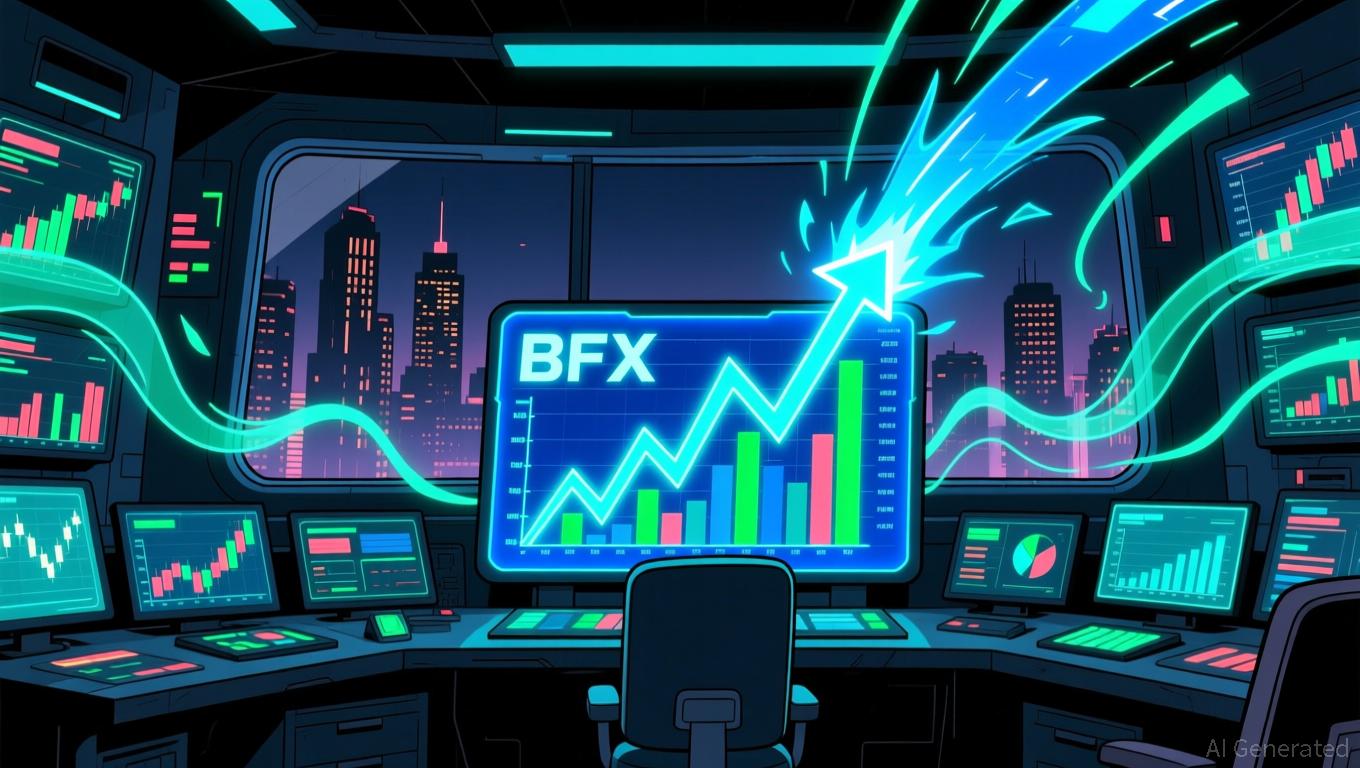Astar 2.0: Is This a Strong Opportunity for Institutional Investors to Enter?
- Astar 2.0 upgrades blockchain scalability via Polkadot's async protocol, cutting block time to 6 seconds and boosting TPS to 150,000. - Institutional adoption grows with $3.16M ASTR purchase, 20% QoQ wallet growth, and partnerships with Sony , Casio, and Japan Airlines. - Cross-chain liquidity via Chainlink CCIP and hybrid architecture position Astar as a bridge between decentralized innovation and enterprise needs. - Analysts project ASTR could reach $0.80–$1.20 by 2030, though liquidity constraints and
Technical Upgrades: Building for Scale
The main advancements in Astar 2.0 stem from its adoption of Polkadot’s asynchronous backing protocol, already active on the Shibuya testnet. This upgrade halves the block time from 12 to 6 seconds and increases the maximum block weight, directly boosting transaction capacity and network performance, according to
Additionally, Astar’s hybrid framework—Astar Link—supports advanced scaling technologies like rollups and zero-knowledge proofs. The network currently achieves 150,000 TPS, with ambitions to exceed 300,000 TPS using the

Institutional Adoption: Indicators and Alliances
Interest from institutions in Astar 2.0 has grown rapidly, highlighted by a $3.16 million purchase of
Partnerships with leading global companies further reinforce Astar’s appeal to institutions. Collaborations with Sony, Casio, and Japan Airlines have broadened the platform’s practical uses, from AI-powered logistics to blockchain-based rewards programs, as detailed in the Bitget report. These alliances
Market Analysis: Prospects and Challenges
Although Astar 2.0 boasts significant strengths, it must contend with liquidity limitations and rivalry from established layer-1 blockchains. Nonetheless, market experts remain positive. A Q3 2025 industry report points to Astar’s on-chain governance, compliance-oriented design, and hybrid structure as major advantages, as cited in the Bitget report. Price forecasts indicate ASTR could reach between $0.80 and $1.20 by 2030, depending on the achievement of development targets and the growth of enterprise partnerships, as outlined in the Bitget report.
Institutional participants should also consider Astar’s governance approach, which prioritizes community-led decisions, in contrast to traditional corporate governance. While this aligns with Web3 values, it may require organizations to adapt to a less centralized model.
Conclusion: A Strong Investment Prospect
Astar 2.0’s technical advancements, growing institutional interest, and strategic collaborations make it an attractive option for investors looking for a blockchain platform with long-term growth potential. Its combination of scalability and practical use cases—supported by measurable on-chain data and enterprise partnerships—addresses key institutional needs. While challenges such as liquidity and competition remain, the platform’s development path indicates strong potential within the evolving Web3 landscape.
For organizations with a long-term outlook, Astar 2.0 represents more than just a speculative investment; it offers a structured opportunity to participate in a blockchain ecosystem that is pushing the boundaries of decentralized technology.
Disclaimer: The content of this article solely reflects the author's opinion and does not represent the platform in any capacity. This article is not intended to serve as a reference for making investment decisions.
You may also like
Cardano News Today: Blockchain Evolves as Practical Applications Surface During DeFi Upheaval
- Blockchain industry shifts from speculation to real-world utility in real estate , privacy protocols, and DeFi, driven by projects like Propy and Lygos Finance. - Privacy chains (Midnight, Zcash) gain traction with hybrid compliance-privacy models, while DeFi faces TVL declines and security breaches like Balancer's $120M exploit. - Digitap's fintech app and Europe's institutional crypto adoption highlight blockchain's mainstream appeal, with euro-denominated futures and DeFi yields attracting investors.

Bitcoin Updates Today: BlockchainFX Secures AOFA License, Paving the Way for Major Crypto Shakeup in 2026
- BlockchainFX secured an AOFA license, enhancing its global legitimacy as a regulated crypto platform. - Its $11M presale with 17,300+ participants and $0.03 token price targets 2026 growth amid multi-market access. - Analysts highlight its regulatory edge over unlicensed rivals like Hyperliquid and Bitcoin's speculative potential. - Market dynamics favor BlockchainFX as crypto surges to $3.5T, though risks include volatility and regulatory scrutiny.

Solana News Update: As Interest in Solana Memes Declines, DeFi Activity Surges Amid User Departures
- Solana's active addresses hit a 12-month low as memecoin-driven hype wanes, despite token price rebounding to $165. - DeFi resilience seen with $5.11B DEX volume in mid-November, outpacing Ethereum and BNB Chain. - Staking growth accelerated by 2.9M SOL increase and new U.S. Treasury rules enabling crypto ETF staking rewards. - Price faces $172 resistance; technical indicators show 62% pullback probability to $150 support zone. - Institutional adoption and real-world utility critical for Solana to sustai
Circle's Soaring Revenue Fails to Ease Concerns Over Profitability Amid Falling Share Prices
- Circle's shares fell 9.3% post-Q3 2025 earnings despite 66% revenue growth to $740M and record USDC adoption, erasing IPO gains. - USDC circulation hit $73.7B (+108%) and on-chain volume reached $9.6T (+680%), but $4.48/share Q2 loss vs $0.64 GAAP EPS raised profitability doubts. - Strategic partnerships with Deutsche Börse/Visa and reversible stablecoin pilots aim to strengthen USDC's market leadership against Tether . - Analysts split between J.P. Morgan's Sell and Monness Crespi's Buy ($150 target), w